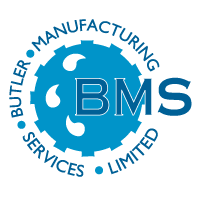Sewage Parameters 5: Ammonia (NH4)
Introduction
The last blog focused on Phosphorus (P) removal. Today, we shift to the complex topic of Ammonia (NH₄) and its removal from sewage. Nutrients like Nitrogen (N) in wastewater contribute to environmental issues such as eutrophication, algae blooms, and fish kills. Addressing these nutrients has become a crucial part of wastewater treatment.
Nitrification: The Aerobic Removal of Ammonia
Nitrification is the process that converts Ammonia (NH₄) to Nitrate (NO₃) under aerobic conditions.
Key Points:
Separate Stage:
Nitrification occurs after BOD removal because nitrifying bacteria are more sensitive than carbonaceous bacteria.
Sensitive Microbes:
Nitrifying microbes require stable, aerobic conditions.
Temperature Sensitivity:
Nitrification slows at low temperatures.
Insulation or heating may be required in colder climates to maintain the liquor temperature above 8ºC.
Nitrification in Package Sewage Treatment Plants
In a package plant like the BMS Blivet, nitrification requires an additional treatment stage:
Series Operation:
An additional Blivet or Aerotor stage is placed after the primary BOD removal.
Capacity Design:
The aerobic section must be proportional to the ammonia load to be removed.
Typical Ammonia Concentrations
Average Influent NH₄: ~40 mg/L in domestic sewage.
High NH₄ Cases: In areas with low water usage (e.g., French villages), concentrations can reach up to 100 mg/L.
Aerobic Capacity for Nitrification
Nitrification Capacity:
Requires 3–4 times the aerobic capacity used for BOD removal.
Ratio depends on climate:
4x BOD capacity in temperate/cold climates.
3x BOD capacity in warm climates.
Temperature Adjustment:
Insulation or heating ensures optimal bacterial activity in cold climates.
Next Steps
In the next blog, we’ll provide worked examples to calculate the additional treatment capacity required for nitrification, including real-world scenarios for ammonia removal.
Questions?
In the next blog, we’ll provide worked examples to calculate the additional treatment capacity required for nitrification, including real-world scenarios for ammonia removal.
About BMS
BMS is a quality manufacturer of package products for wastewater and stormwater treatment:
Established: 1986
Global Reach: Exported to over 50 countries.
Family Business: A third-generation company with deep expertise.
BMS Product Range
BMS provides a wide array of surface water and wastewater treatment products, including:
View the full product catalogue here
Additional Services by BMS
Free Design Service: For sewage treatment, pump stations, and surface water management.
Operation and Maintenance: Full services for existing installations, including repair, advice, and testing.
Free CPD Presentations: Available for sewage treatment and surface water management, delivered at your location.
We would be delighted to discuss any requirements you might have, and we are available to meet you at your convenience. Contact us today.
© Butler Manufacturing Services 2024.

